Eurotrip 2022: Nottingham, U.K.
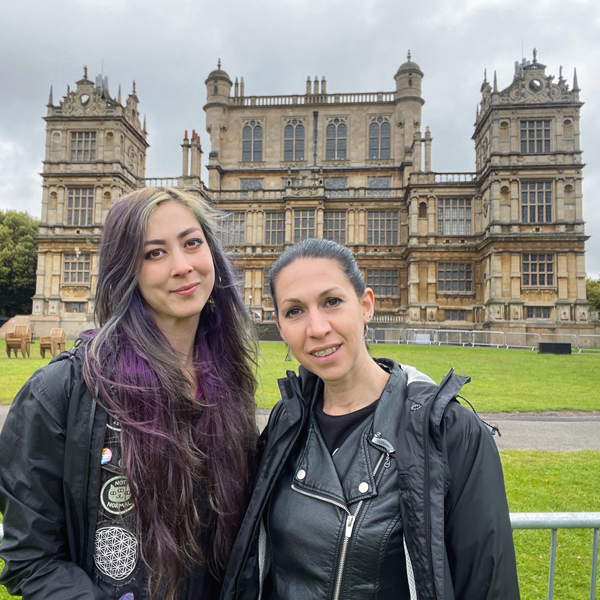
Technology in the 21st century is fantastic. With entire social networks at our fingertips, we end-users can connect with others from different places, whether it’s within the same city or eight time zones away across the ocean. After exploring Brighton with Eli and James, it was time to discover a land that’s a bit further north to Nottingham with the guidance of my new friend, Catherine.
Catherine and I connected a few years ago on Instagram. It’s literally like being friends with myself if there were two of me. Catherine is practically my British twin: a fellow goth vegan cat lady who has run more marathons than I have–18 marathons and counting, plus three ultramarathons. Catherine is a hardcore runner; the vast majority of her free time is dedicated to covering great distances, including a 100km ultramarathon. She’s truly inspiring. She even had purple hair at one point!
When I asked her if she would like to meet up, she immediately offered ideas of where to go and what to do in Nottingham. As a longtime resident, Catherine knows the lay of the land and all of the hidden magic that rests within it. With her knowledge of notable landmarks in the area, she was able to plan a true goth field trip.
Day 1 in Nottingham
Catherine greeted me with a hug at the train station. It was so nice to finally meet my doppelgänger!
I noticed how calming her presence was. We both seem to be introverted cat ladies, and with that come comfortable silences. There’s the relief of being okay with not feeling the need to fill the silence with words. As an introvert, while I can handle long stretches of time alone, I am also happy just basking in another human’s presence.
Nottingham may appear as a quaint city, but I would soon find out what wonders lie ahead. It’s really nice to get out of the hustle and bustle of the big city and into the rolling green English countryside.
The V Spot
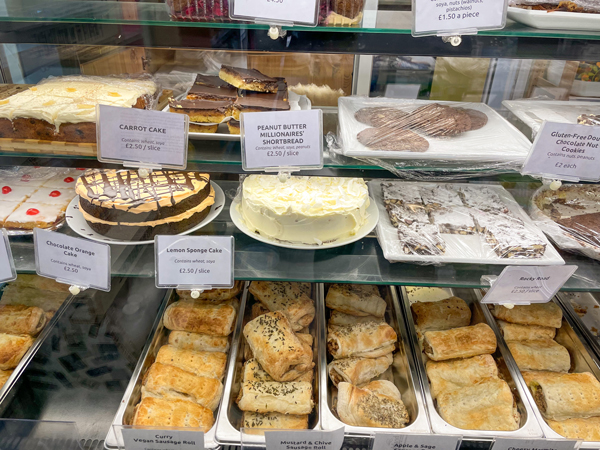
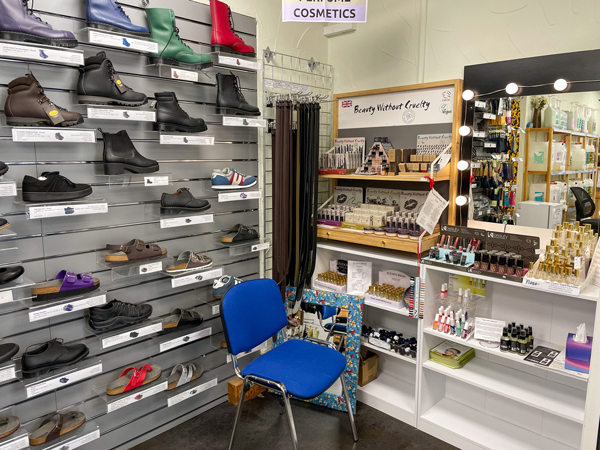
We first ventured into V Spot in Nottingham, which was a 100 percent vegan market. You could stock up on groceries, or even choose from a variety of sweet and savory treats in the cafe. A shoe rack displays many types of leather-free and animal-friendly footwear, while the wall next to it offered cosmetics without any animal products.
Fun fact: The British aren’t big peanut butter fans like Americans are. So, it is a little harder to find around here. We managed to find some at V Spot.
Divine Coffeehouse
After visiting V Spot, we had vegan lunch at Divine Coffeehouse. The cafe sold vegan sandwiches for cheap—a welcome break from the London prices! Catherine and I split a warm blueberry cinnamon roll, the shape resembling a muffin. The purple walls of the cafe really spoke to both of us.
Witch marks at Creswell Crags
Then came the real deal of our goth field trip in Nottingham: the witch marks at Creswell Crags.
We drove for an hour among the rolling hills in the lush green countryside to Creswell Crags, an ice age excavation site in a limestone gorge with at least 60,000 years of history. There are caves containing the eerie “Witch Marks.” What was mistaken for Victorian graffiti are actually 16th-19th century cave carvings that are speculated to serve as protection from evil spirits.
Until recently, they were hiding in plain sight. In 2018, Hayley Clark and Ed Waters from the Subterranea Britannica group happened to notice these mysterious carvings on a cave tour. That was just a few years ago! Can you imagine something like this being under everyone’s noses for centuries?
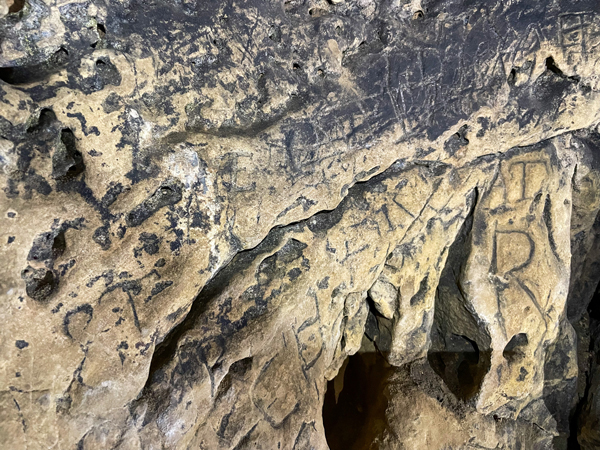
The term “witch marks” is a bit misleading, because they don’t actually have to do with repelling witches. Instead, they were used to turn away evil spirits of all kinds. Witch marks are also known as “apotropaic marks,” which mean “turn away” or “ward off.” Evil spirits were suspected to follow straight lines, so sometimes we would find witch marks depicting boxes. It’s believed that those boxes or squares would contain demons like a trap.
Why did people carve witch marks?
Evil is also thought to follow the flow of air. Traditionally, people carved ritualistic witch marks on doors, windows, and fireplaces—anywhere evil spirits can get in. Natural disasters, disease, famine, or violent forces were attributed to evil spirits. In a time where mass communication and modern science weren’t readily available, people back then didn’t want to take their chances. Maybe carving those marks was a way of taking back control and quelling fears?

What do these witch marks all mean?
We discovered repeating motifs and symbols of these witch marks. Some of the most common symbols were:
- A double ‘V,’ which likely stands for “Virgo Virginum.” It can also appear as an M upside down, for “Maria.” It’s believed to be a spell asking for the Virgin Mary’s protection against evil.
- ‘P’ stands for “Pace,” or “Peace.”
- Crossed I’s, which stand for “Jesus.” Back in the day, Jesus’ name started with an I for “Iesu.” An ‘I’ with a central bar was written as such in the 17th century. That’s one way these symbols could be dated: how certain letters are written.
- ‘R’ for Rex or Regina, though there’s a debate if that’s actually a witch mark.


Then there were some other witch marks that were speculations. For instance, there was one that appeared to be a 777. There could be a 1 carved in front of it, so it would depict the year 1777. But because the 1 appears so faded with the rest of the numbers, it’s possible that it’s just 777. One theory is that writing those three 7’s translates to 666 in Hebrew–which is believed to be the devil’s number. So, that would be the devil’s symbol in this case. Since these are only theories, that’s the fun of decoding the witch marks.

Finally, what is considered to be the largest witch mark appears to be a Merels Board, or Nine Men’s Morris, one of the oldest strategy games in the world. Merels Boards were used as witch marks, most likely because their maze-like form could trap evil and contain it.
Vegan Sunday Roast at Fothergills
Crawling through the limestone caves and taking in all of the mysterious witch marks made me and Catherine hungry again. Since it was a Sunday, Catherine suggested that we go to Fothergills for a British weekly tradition: the Sunday roast.
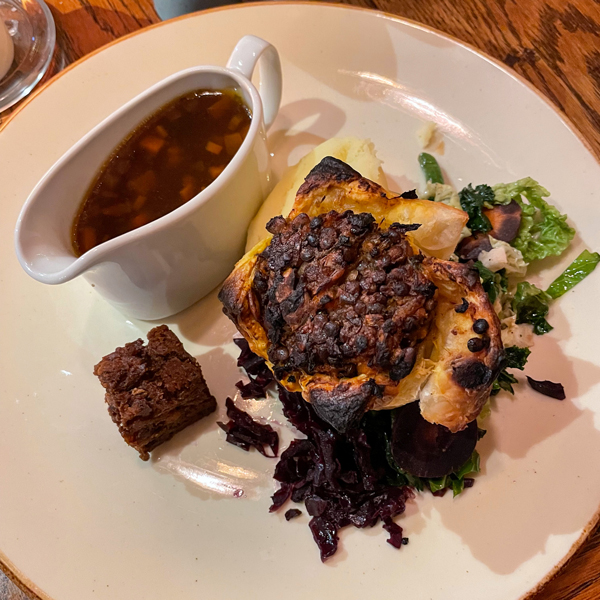
Traditionally, a Sunday roast consists of slices of carved meat, mashed potatoes and gravy, sautéed veggies, and maybe some bread stuffing. It’s reminiscent of Thanksgiving food that we have in the U.S. Our vegan version was an apricot and lentil roast wrapped in a flaky pastry shell, plus gravy that was more like a broth. It truly hit the spot after an afternoon of being spooked by witch marks.
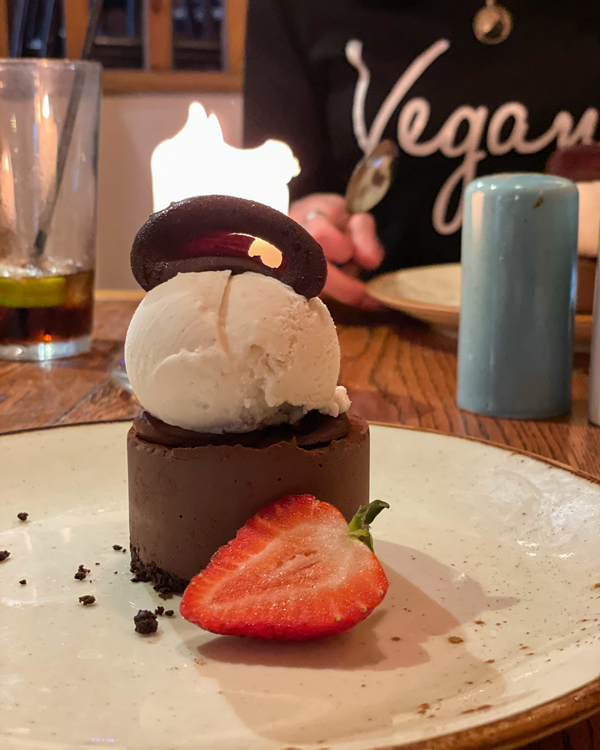
For dessert, we both had a chocolate torte with vegan vanilla ice cream. The torte was so rich, that it was definitely going to put us to sleep once we got home. We savored every bite of this decadent dessert.
Robin Hood, Nottingham Castle, and the oldest inn

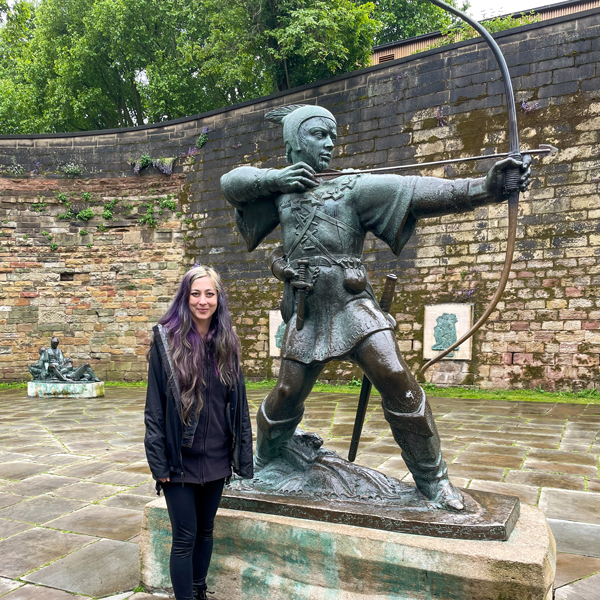
Of course, we had to take a peek at the bronze Robin Hood statue pointing his bow and arrow at the Nottingham Castle. I learned that Nottingham is where the world-famous Robin Hood tale originates: an altruistic outlaw who stole from the rich and gave to the poor.

Finally, we poked our heads into Ye Olde Trip to Jerusalem, a pub that has supposedly been established in the year 1189 AD–even though there’s no documentation to support this claim. According to legend, this was a stop for King Richard the Lionheart and his knights to have an ale, before heading off to fight the Crusades in Jerusalem in the 12th century.
The inn is nestled against the sandstone cliff where Nottingham Castle is built. Part of the inn is even carved into the cliff. Inside, there are cozy nooks to enjoy a drink in. Throughout the inn, there are artifacts and relics of Nottingham’s history. Below the pub, there’s a network of caves that was originally used as a brewery in the 12th century, since it was a good environment for making ale.
Day 2 in Nottingham
After having breakfast and coffee—and playing with her cat, Mavis—Catherine and I set off for another goth vegan adventure in the morning.
Wollaton Hall
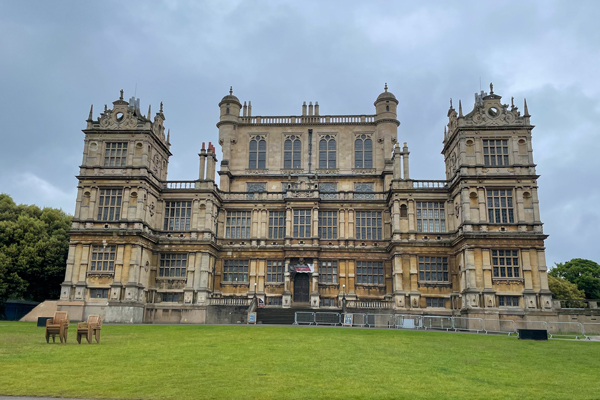
First, we made a quick stop at Wollaton Hall, more famously known as Bruce Wayne’s or Batman’s lair in the 2012 movie, “The Dark Knight Rises.” We didn’t stay for long, but we wanted to appreciate the architecture. This was a good start for Day 2 of this goth Nottingham field trip!
Newstead Abbey

Set on extensive landscaped and wild gardens is the 12th-century monastery, Newstead Abbey. It’s famously known as the old residence of the revered Romantic poet, Lord Byron. The only time I’ve ever read his work was in my senior year of high school, when we had to take an old English literature course.
There’s an entire museum dedicated to Lord Byron. Other exhibits go into detail about the 800-year history of the medieval monastery. Instead of seeing the museum, we decided to walk around the labyrinth-like gardens of this grand 300-acre estate.
The expansive gardens range in style from the Spanish landscapes with trimmed hedges to bamboo groves of a Japanese Oasis. Walking trails in lush forests wind around trickling streams. Silent white swans glided over the lake with their fuzzy gray cygnets. All of this beauty under the overcast skies reminded me so much of Seattle.

In one of the gardens with a fountain, we saw a cat that almost looked like Mavis.
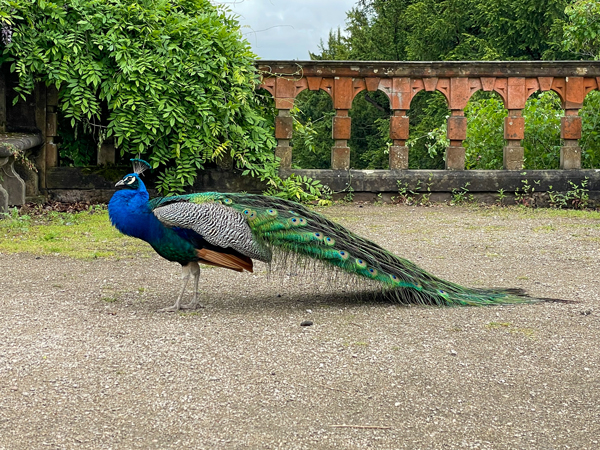
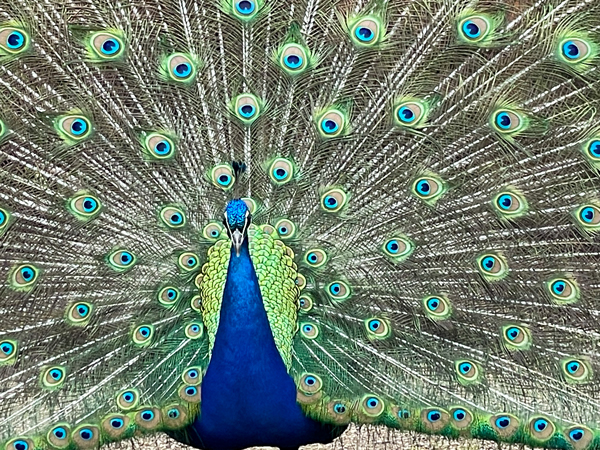
We heard a peacock squawk from afar and followed the sound. We walked along a stone wall and through a tunnel. And there he was in all of his magnificent glory! Just as we wondered if he was going to show us his full beauty, he stretched out, proudly displaying his shimmering blue and green feathers that look like many eyes.

Catherine and I could spend all day here. The medieval abbey, the lush gardens, and the trails were all mesmerizing, as were the resident animals that add even more charm to these grounds.
Bread & Butterflies
After walking through Lord Byron’s gardens, it was time to refuel before heading to the train station. Catherine took us to a little vegan tearoom called Bread & Butterflies.
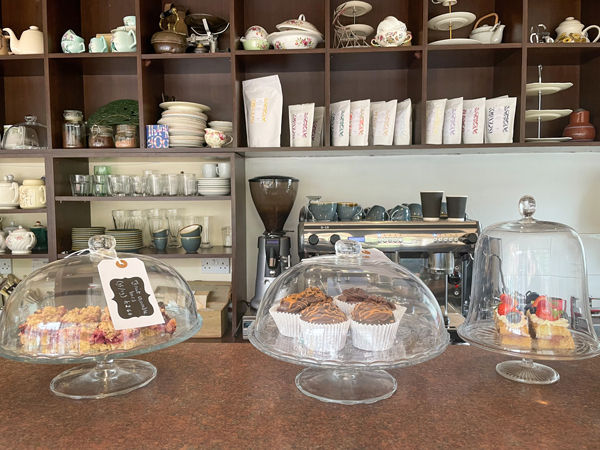
Ivory lace and folded paper butterflies decorated the whole tearoom. Frilly teacups and saucers with floral designs were displayed on bookshelves and credenzas throughout, as various cakes under glass bell jars stood on the counter. Beside our table, a terrier lounged on the sofa.
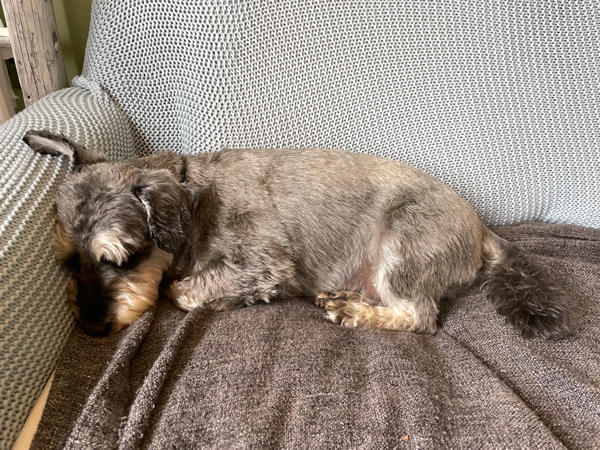
When I’m traveling, I prefer to try the local dishes, rather than a familiar dish from back in my home country, the States. People have perfected the local dishes, and that’s one of the joys of traveling: trying the customary food of a given destination.
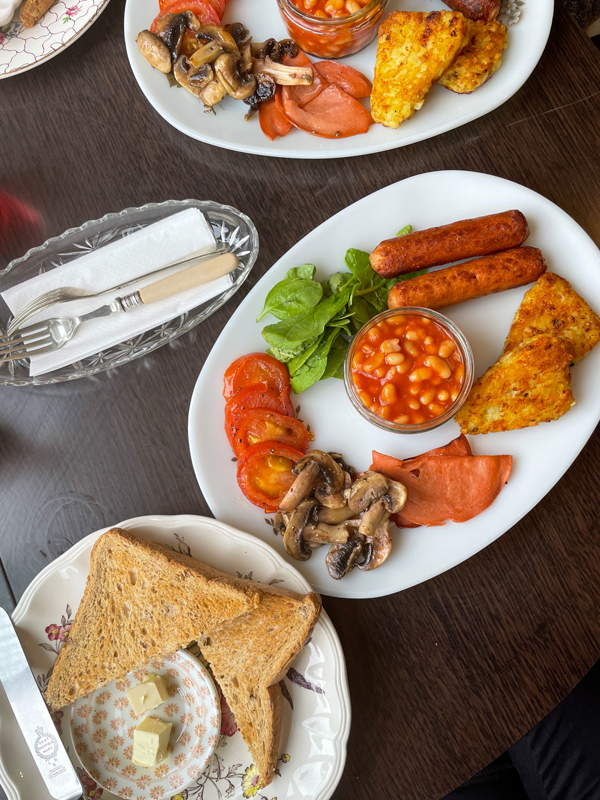
With that in mind, I wouldn’t order American pancakes. Instead, we both ordered a full English breakfast, which is still similar to a full American breakfast. It was technically lunch time, but you can have a full English breakfast any time of the day. It has everything you need: beans and vegan sausages for protein, toast and hashbrowns for carbs, plus fresh spinach, and grilled mushrooms and tomatoes for veggies.
What I also like is that, as with many traditional meals, everyone makes a slightly different version of it, such as the full English breakfast that I had in Brighton.
Hopkinson Vintage Market & Cafe
As the goth vegan Nottingham field trip was wrapping up, Catherine and I had some time to kill before I went back to London.

The Hopkinson Vintage, Antiques and Art Centre was right next to the Nottingham train station, which was a perfect way to spend some time before taking the train back. It’s a cafe, a vintage store, and an antique market all under one roof. There’s even a haunted museum that features shrunken heads, a devil’s toy box, kits for exorcisms, and many more curiosities.
The shop had two full floors of vintage wear, such as brown tweed coats with elbow patches and crushed velvet dresses with tinsel woven in the fibers. We didn’t buy anything, but if anyone wants to stock up on fashion from the 1970s before hopping on the train, this is one place they could find it.
Last thoughts on Nottingham
Nottingham showed that this city has so much more magic than meets the eye. From witch marks hiding in plain sight to centuries-old pubs with hidden underground cave systems, there’s always something waiting to intrigue us. I feel like I could live here for a year and still discover something new. This town is truly a treasure trove of serendipity, folklore, and curiosity. And of course, I now have a new friend to explore all of this with.
1 Comment
darenmd
Wonderful trip! I personally swoon a bit when architectural interiors show exposed structural members, too. Your smile is contagious!